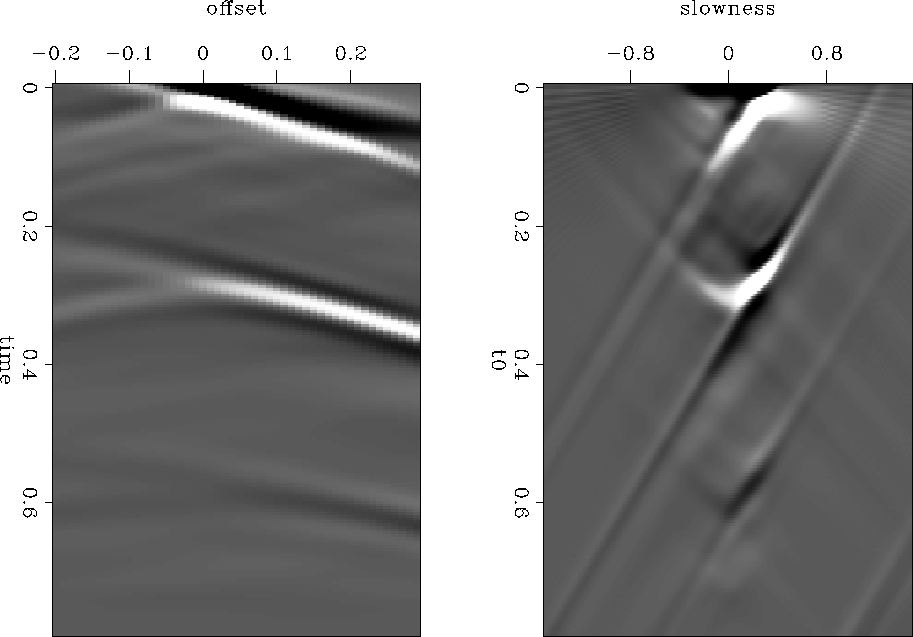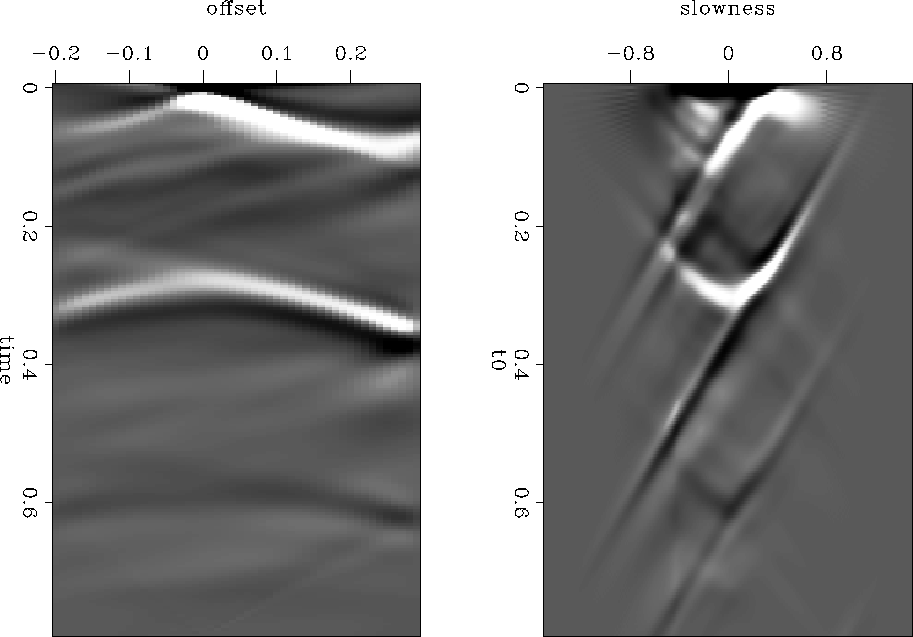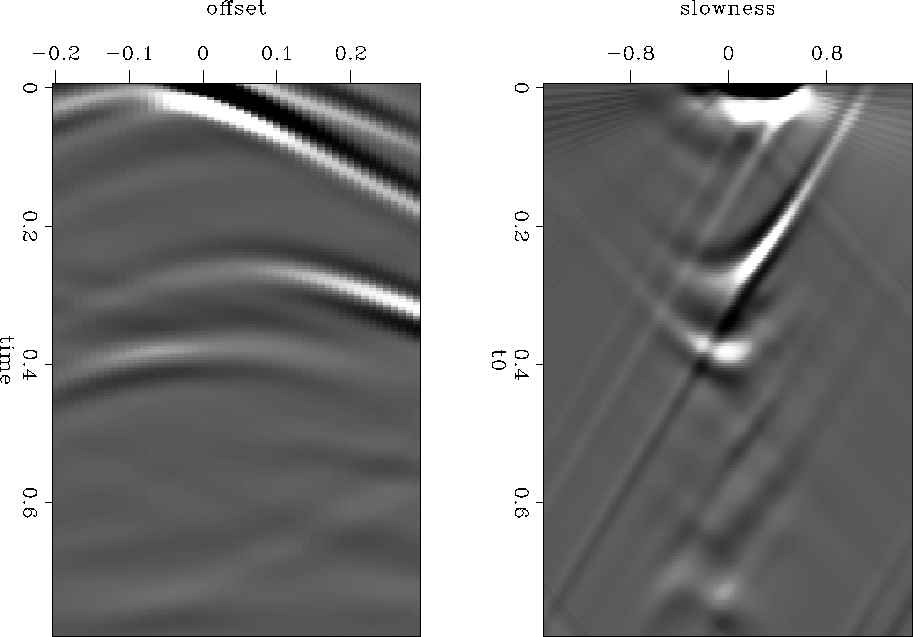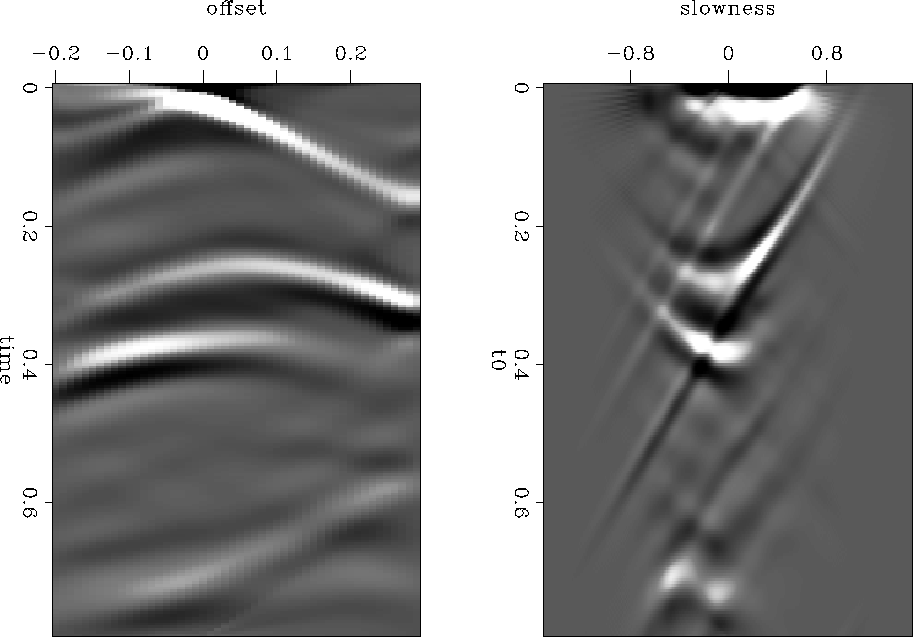For the case of a plane layered Earth, for a particular slowness to be present in the cross-correlation seismograms, then there must be ambient energy incident with that slowness. Similarly, if the incident energy has one predominant slowness then this will overwhelm the rest. In this case, a filter should be applied so the resultant seismograms contain information with all slowness values.
In this paper, we have applied a filter to cross-correlation
common shot gathers
in the slant-stack (linear ![]() ) domain. The transformation
to the slant-stack domain is easily invertible Thorson (1984). It also
represents a decomposition into plane waves of given slowness. Since this is
the energy which we would like to balance, it is a natural domain to
work in both practically and theoretically.
) domain. The transformation
to the slant-stack domain is easily invertible Thorson (1984). It also
represents a decomposition into plane waves of given slowness. Since this is
the energy which we would like to balance, it is a natural domain to
work in both practically and theoretically.
The filter that was applied in this domain tapered the r.m.s. values of each p trace by a Gaussian weighting function. The width of the Gaussian was determined by the range of slowness values desired in the output.
For a v(z) model illuminated by plane waves from below, each plane wave will contribute to one slowness value, and so the slant-stack decomposition well separates the energy from each incident angle. The left panel of Figure 12 shows a cross-correlation seismogram generated for single horizontal layer illuminated by plane waves from all directions in the subsurface. However some of the plane waves were stronger than others, so the seismogram is dominated by energy with positive p-values. This can be seen in the slant-stack domain shown in the right panel.
|
pw.plane.b4
Figure 12 Cross-correlation seismograms over a single horizontal layer with dominant energy from one incident angle. Right panel: common shot gather. Left panel: slant-stack. |  |
|
pw.plane.after
Figure 13 Cross-correlation seismograms over a single horizontal layer after slowness filtering. Right panel: common shot gather. Left panel: slant-stack. |  |
|
pw.block.b4
Figure 14 Cross-correlation seismograms over fault block model with dominant energy from a single source in the subsurface. Right panel: common shot gather. Left panel: slant-stack. |  |
|
pw.block.after
Figure 15 Cross-correlation seismograms over fault block model after slowness filtering. Right panel: common shot gather. Left panel: slant-stack. |  |
The filtered slant-stack of the same data is shown in Figure 13, along with the resultant seismogram after inversion back to the t-x domain. The primary and first order multiple reflection events are now more coherent.
For a model with lateral velocity variations, we expect less successful results. Plane waves in the subsurface are not necessarily plane waves when they reach the surface, so the slant-stack transformation does not separate the energy as cleanly. Similarly if the sources of the ambient noise are with in the zone of interest, the corresponding wavefronts will be diverging when they reach the surface, contributing to a range of p-values. These problems can be seen in Figures 14 and 15, where there is an extra dipping event towards the bottom of the gather.
It should be noted that this method of filtering will boost under-represented slownesses even if they contain no signal, in which case noise will be boosted. It would be better if a filtering scheme was designed that only boosted slownesses containing useful information.